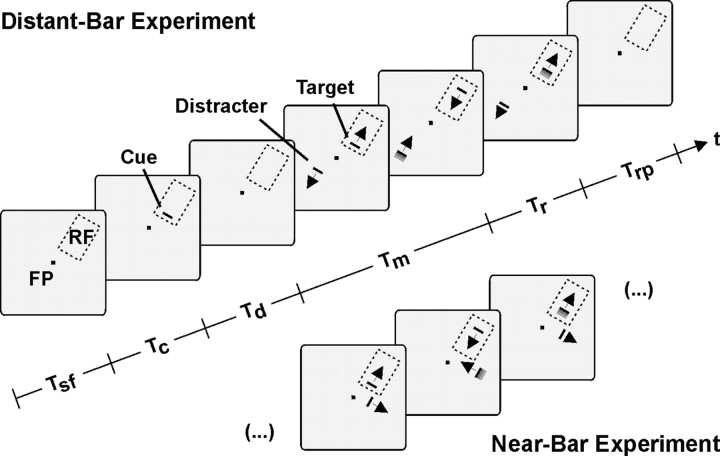Figure 1.
Sequence and spatial arrangement of the stimuli for distant-bar and near-bar experiments. Both experiments followed the same temporal sequence, but the two bar stimuli were arranged differently in terms of spatial separation and relative motion directions: one bar was always placed inside the RF of the recorded neuron and moved back and forth along a trajectory matched to the preferred direction. The second bar was placed with identical eccentricity in the opposite hemifield and moved in counter-phase in the distant-bar experiment. In the near-bar experiment, the second bar was positioned in the vicinity of the RF and moved along an orthogonal path. Each trial started with the appearance of a fixation point (FP). If the monkey responded by starting fixation and pressing a lever within period Tsf, the trial continued with a 500 msec presentation of a spatial cue (Tc), indicating the location of the target. After a delay period (Td), both bars appeared and started immediately to move for up to 15 sec (Tm). At the end of Tm, the target bar increased its speed, and a response period (Tr) of 500 msec (monkey K) or 700 msec (monkey E) followed, during which the animal had to release the lever. Successive trials were separated by a resting period (Trp) of 2 or 3 sec. In approximately half of the trials, speed-up of the target was preceded by speed-up of the distracter bar, which had to be ignored. Acceleration is indicated by shading of the bars.

